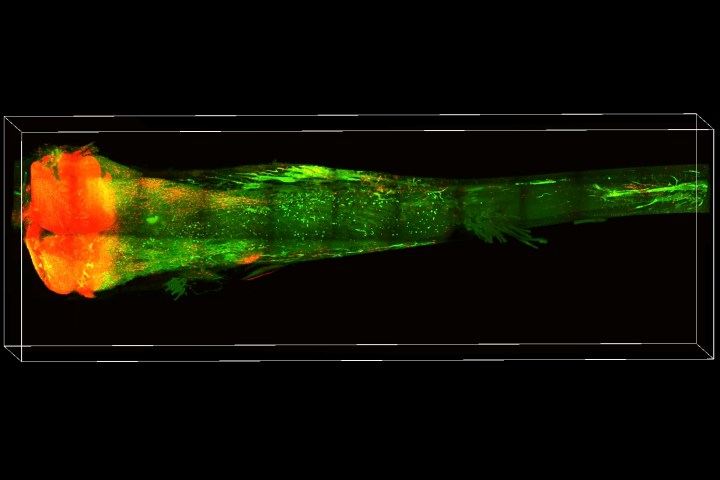
Unfortunately, this is easier said than done. The slices that researchers take are very thin, around 40 micrometers, in order to get the best out of the light microscopy technology used to examine them. But this can cause damage to the bone by shattering its edges.
A new technique developed at California Institute of Technology could help solve those problems and others like it. In the laboratory of Viviana Gradinaru, an assistant professor of Biology and Biological Engineering, investigators have come up with a method for making bones transparent.
Called Clarity, the technique can be carried out on postmortem bones with no living tissue. It was originally developed as a way to make soft tissues transparent but has now been extended to hard tissues as well. It works by first removing opaque molecules — called lipids — from cells, with the lost structural support augmented by adding a clear hydrogel mesh. A detergent is then flowed through the bone to leave it transparent to the eye.
In the Caltech study, the team tested the technology with bones taken from postmortem transgenic mice. “These mice had been specially engineered to express a red fluorescent molecule that allowed us to label their stem cells within the bone marrow,” Gradinaru told Digital Trends. “It was important that the clearing method we used allowed us to preserve that fluorescence, so that we could preserve the identity of the cells without needing any additional labelling.”
While this is a good proof of concept, however, the real hope is to be able to use this clearing technique to analyze human bones.
“This would be very informative,” Gradinaru said. “Using the clearing method, it would be possible for us to look at the composition of bones, as well as the effect of different drugs or exercise on them. The challenge with human bones is scaling up our work. They’re larger bones, so it will take longer to clear them. It is possible, though.”
The goal is to use the technique to test new drugs that could help fight diseases like osteoporosis, a condition that weakens bones, making them fragile and more prone to breakages.


